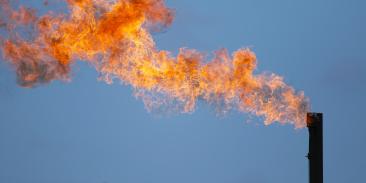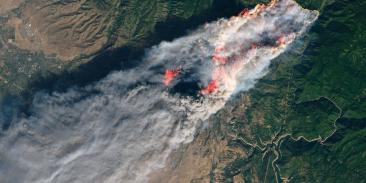MethaneSAT Loses Contact with Satellite
Core Mission to Turn Methane Measurement Data into Action Will Continue
On Friday, June 20, the MethaneSAT mission operations lost contact with MethaneSAT. After pursuing all options to restore communications, we learned this morning that the satellite has lost power, and that it is likely not recoverable. While this is difficult news, it is not the end of the overall MethaneSAT effort, or of our work to slash methane emissions.
Launched in March 2024, MethaneSAT had been collecting methane emissions data over the past year. It was one of the most advanced methane tracking satellites in space, measuring methane emissions in oil and gas producing regions across the world.
The mission has been a remarkable success in terms of scientific and technological accomplishment, and for its lasting influence on both industry and regulators worldwide.
The engineering team is conducting a thorough investigation into the loss of communication. This is expected to take time. We will share what we learn.
Thanks to MethaneSAT, we have gained critical insight about the distribution and volume of methane being released from oil and gas production areas. We have also developed an unprecedented capability to interpret the measurements from space and translate them into volumes of methane released. This capacity will be valuable to other missions.
EDF and MethaneSAT remain firmly committed to our core purpose of turning data into action to protect the climate including reducing methane emissions from the global oil and gas industry.
The advanced spectrometers developed specifically for MethaneSAT met or exceeded all expectations throughout the mission. In combination with the mission algorithms and software, we showed that the highly sensitive instrument could see total methane emissions, even at low levels, over wide areas, including both large sources (super emitters) and the smaller ones that account for a large share of total methane emissions, which were not visible from space until MethaneSAT.
We will be working with partners around the world to leverage the algorithms and associated software as well as the now-proven high precision technology that was developed as part of the MethaneSAT mission so the world has access to high quality actionable greenhouse gas emissions data on a global basis.
We will continue to process data that we have retrieved from the satellite and will be releasing additional scenes of global oil and gas production region-scale emissions over the coming months.
To solve the climate challenge requires bold action and risk-taking and this satellite was at the leading edge of science, technology and advocacy.
We also will continue to work closely with our partners to reduce methane emissions and implement the goals of the Global Methane Pledge, The Oil and Gas Decarbonization Charter, Oil and Gas Methane Partnership 2.0, the United Nations Environment Programme’s International Emissions Observatory and Climate and Clean Air Coalition, and so many other efforts this mission was designed to support.
With more than 3 million members, Environmental Defense Fund creates transformational solutions to the most serious environmental problems. To do so, EDF links science, economics, law, and innovative private-sector partnerships to turn solutions into action. edf.org
Latest press releases
-
Trump Administration Announces Unlawful Offshore Wind Halt
December 22, 2025 -
Governor Hochul Repeals "100-Foot Rule," Accelerating New York's Clean Energy Future
December 19, 2025 -
Colorado Air Regulators Approve Landfill Methane Standards
December 18, 2025 -
Proposal Would Guarantee Public Access to Air Quality Data
December 18, 2025 -
New Bill Will Help Keep Domestic Manufacturers Competitive
December 17, 2025 -
Satellite Data Shows Colorado Oil & Gas Methane Emissions Dropped as State Rules Took Effect
December 17, 2025










